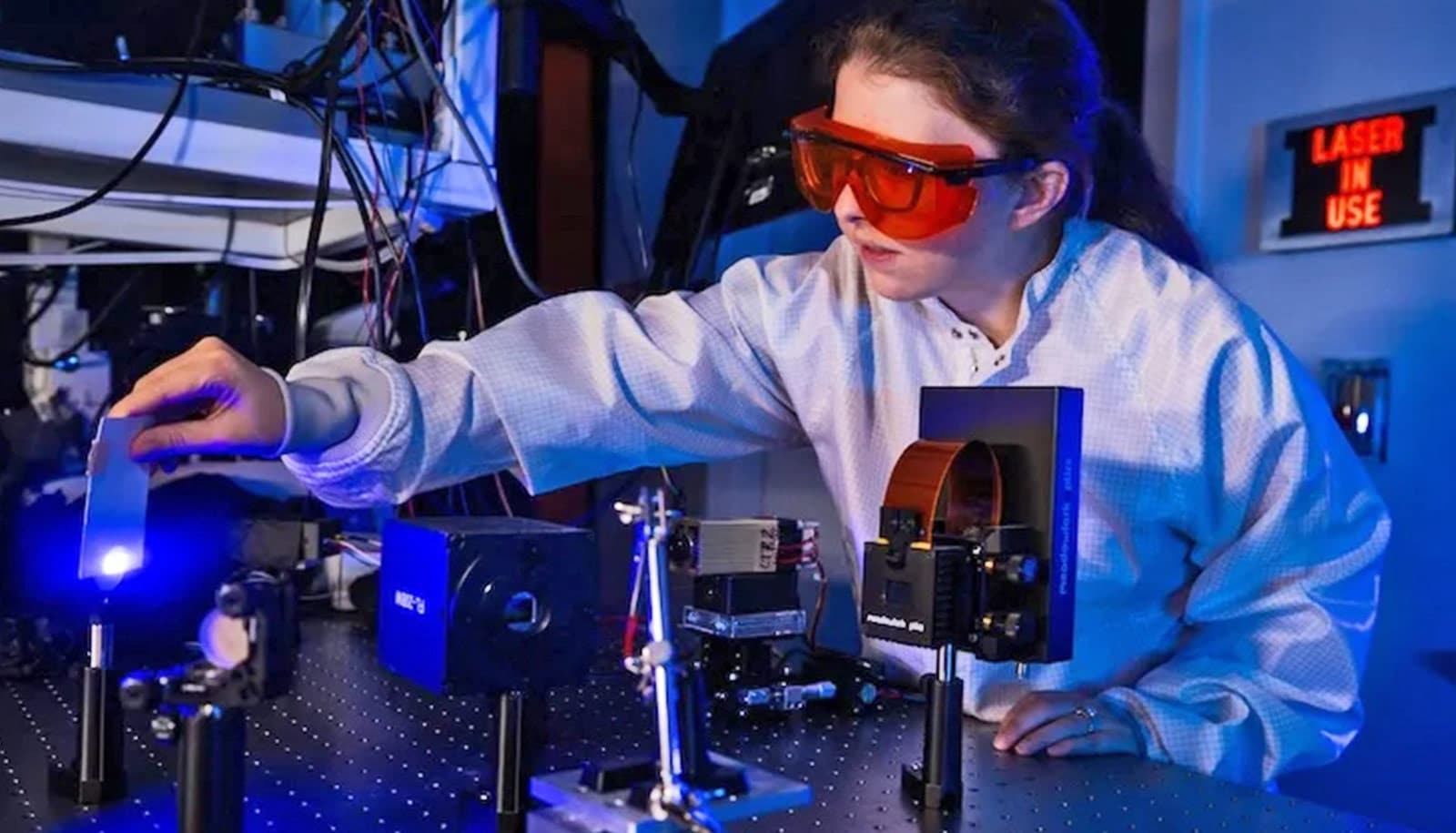Why do synthetic 2D materials often perform orders of magnitude worse than predicted? A new understanding of this scenario could improve the materials’ performance in future electronics, photonics, and memory storage.
2D materials are films only an atom or two thick. Researchers make 2D materials by the exfoliation method—peeling a slice of material off a larger bulk material—or by condensing a gas precursor onto a substrate. The former method provides higher-quality materials, but is not useful for making devices. The second method is well established in industrial applications, but yields low performance 2D films.
The researchers demonstrated, for the first time, why the quality of 2D materials grown by the chemical vapor deposition method have poor performance compared to their theoretical predictions. They report their results in Scientific Reports.
Grown on sapphire
“We grew molybdenum disulfide, a very promising 2D material, on a sapphire substrate,” says Kehao Zhang, a doctoral candidate working with Joshua Robinson, associate professor of materials science and engineering at Penn State.
“Sapphire itself is aluminum oxide. When the aluminum is the top layer of the substrate, it likes to give up its electrons to the film. This heavy negative doping—electrons have negative charge—limits both the intensity and carrier lifetime for photoluminescence, two important properties for all optoelectronic applications, such as photovoltaics and photosensors.”
Once they determined that the aluminum was giving up electrons to the film, they used a sapphire substrate that was cut in such a way as to expose the oxygen rather than the aluminum on the surface. This enhanced the photoluminescence intensity and the carrier lifetime by 100 times.
Doping achievement
In related work, a second team of researchers led by the same Penn State group used doping engineering that substitutes foreign atoms into the crystal lattice of the film in order to change or improve the properties of the material. They report their work in Advanced Functional Materials.
“People have tried substitution doping before, but because the interaction of the sapphire substrate screened the effects of the doping, they couldn’t deconvolute the impact of the doping,” says Zhang, who is also the lead author of the second paper.
Using the oxygen-terminated substrate surface from the first paper, the team removed the screening effect from the substrate and doped the molybdenum disulfide 2D film with rhenium atoms.
“We deconvoluted the rhenium doping effects on the material,” says Zhang. “With this substrate we can go as high as 1 atomic percent, the highest doping concentration ever reported. An unexpected benefit is that doping the rhenium into the lattice passivates 25 percent of the sulfur vacancies, and sulfur vacancies are a long-standing problem with 2D materials.”
‘Tiny windows’ test may find better 2D materials for fuel cells
The doping solves two problems: It makes the material more conductive for applications like transistors and sensors, and at the same time improves the quality of the materials by passivating the defects called sulfur vacancies. The team predicts that higher rhenium doping could completely eliminate the effects of sulfur vacancies.
“The goal of my entire work is to push this material to technologically relevant levels, which means making it industrially applicable,” Zhang says.
Contributors to the Scientific Reports paper are from Penn State, the Molecular Foundry at Lawrence Berkeley National Laboratory, and the University of Pittsburgh.
Contributors to the Advanced Functional Materials paper are from Penn State, the University of Texas at Dallas, George Mason University, the University of Pittsburgh.
The National Science Foundation, the Semiconductor Research Corporation, Defense Advanced Research Projects Agency, the US Department of Energy, the Nanoelectronics Research Initiative, and the National Institute of Standards and Technology supported portions of this work.
Source: Penn State



